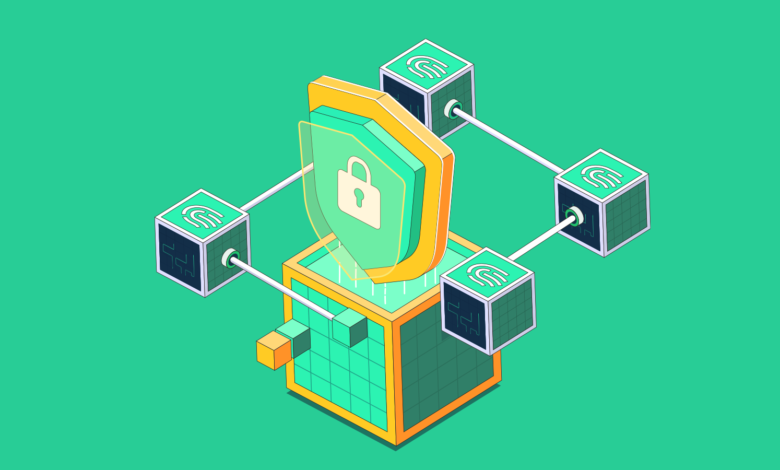Layer 4 Solutions: The Future of Blockchain

Understanding Blockchain Layers: From Layer 1 to Layer 4
To understand Layer 4, we first need to look at how blockchain layers are structured:
|
Layer |
Purpose |
Examples |
|
Layer 1 |
Base protocol layer |
Bitcoin, Ethereum |
|
Layer 2 |
Scaling solutions on top of Layer 1 |
Lightning Network, Optimism |
|
Layer 3 |
App-specific logic and tools |
Custom dApps, SDKs, APIs |
|
Layer 4 |
Coordination, automation, and super-scaling |
Hyperchains, orchestration layers |
Layer 1 is the foundation. Layer 2 adds speed. Layer 3 helps developers build. And now, Layer 4 enters to connect, coordinate, and supercharge everything above.
What Is Layer 4 in Blockchain?
Layer 4 solutions are not yet common. But they are already being tested and talked about in advanced blockchain communities. These solutions focus on orchestration and automation across multiple chains, layers, and apps.
Rather than handling transactions directly, Layer 4 coordinates how those transactions happen. Think of it like a traffic controller in a very busy city. It doesn’t drive the cars but helps them move faster, with fewer traffic jams.
Key goals of Layer 4 include:
- Boosting throughput without sacrificing security
- Improving dApp performance across ecosystems
- Automating interchain communication
- Supporting the rise of hyperchains and modular blockchains
With Layer 4, blockchain networks could support millions of users and complex applications without slowing down.
Why Layer 4 Matters for Blockchain Scaling
Scalability has been one of the hardest problems in crypto. Blockchains like Ethereum face slow speeds and high fees when traffic increases. Layer 2 solutions helped a lot, but issues like fragmentation and cross-chain confusion still remain.
This is where Layer 4 comes in.
Here’s how Layer 4 boosts blockchain scaling:
- It connects layers and chains
Layer 4 works like middleware. It links multiple Layer 2s and Layer 3s, reducing friction between them. - It automates processes
It uses smart logic to decide where to route transactions and how to balance load. - It enables hyperchains
These are powerful, application-specific chains that scale horizontally. Layer 4 helps them talk to each other easily. - It improves throughput
By coordinating resources more efficiently, Layer 4 can multiply the number of transactions per second. - It boosts dApp performance
Developers can create dApps that work across chains, layers, and tools with less manual setup.
Layer 4 is not a replacement but a powerful complement to existing infrastructure. It makes everything already built work better and faster.
What Are Hyperchains and Why Are They Important?
You might be hearing a lot about hyperchains in recent blockchain discussions. These are advanced, modular blockchains designed for extreme performance.
Think of them as custom highways for blockchain data. A DeFi app might run on one hyperchain, while a gaming platform runs on another. With Layer 4 solutions, these hyperchains can work together, share data, and sync in real time.
Hyperchains need orchestration. That’s exactly what Layer 4 offers – smart coordination across a network of blockchains. This helps developers build apps that are faster, cheaper, and more scalable than ever before.
Use Cases: Where Layer 4 Could Change the Game
Here are a few ways Layer 4 could reshape the blockchain space:
1. Cross-chain dApps
Build apps that move assets or data across blockchains without slow bridges or high risk.
2. Modular infrastructure
Separate parts of your dApp (storage, logic, payments) across different chains, but control it all from one layer.
3. Smart routing
Automatically choose the best blockchain layer to process a transaction based on speed, fees, or network load.
4. Multi-chain DeFi
Combine liquidity pools from several blockchains into one smooth user interface using Layer 4 tools.
Benefits of Layer 4: A Quick Summary
|
Feature |
Benefit |
|
Interchain coordination |
Easy connection between multiple blockchains |
|
Smart automation |
Reduces manual tasks and human error |
|
Higher throughput |
More transactions with less congestion |
|
Better dApp performance |
Faster loading, smoother user experience |
|
Modular scalability |
Flexibility to scale different parts of the system |
Challenges Ahead
While Layer 4 shows great promise, it’s still early in development. Some challenges include:
- Lack of real-world testing
- Complexity of building on top of multiple layers
- Security concerns across a broader system
- Need for developer education and adoption
However, as more platforms experiment with Layer 4, these issues could be solved through open collaboration and strong incentives.
Layer 4 could be a turning point in the blockchain journey. By offering smart, scalable coordination tools, it opens the door to massive performance upgrades and simpler user experiences. As dApps, hyperchains, and multi-layered blockchains grow, Layer 4 solutions will become an important part of the stack.
For now, it’s a space to watch. But in the near future, it may be the backbone of the next-gen infrastructure for Web3.
Keep an eye on this rising layer. The next leap in blockchain scaling may happen here.
https://www.coinbackyard.com/wp-content/uploads/2025/04/6582cc97f6b6d50001fc1144_Blockchain-Security-What-Makes-a-Blockchain-Secure-1600-900.png
2025-04-07 05:03:24




